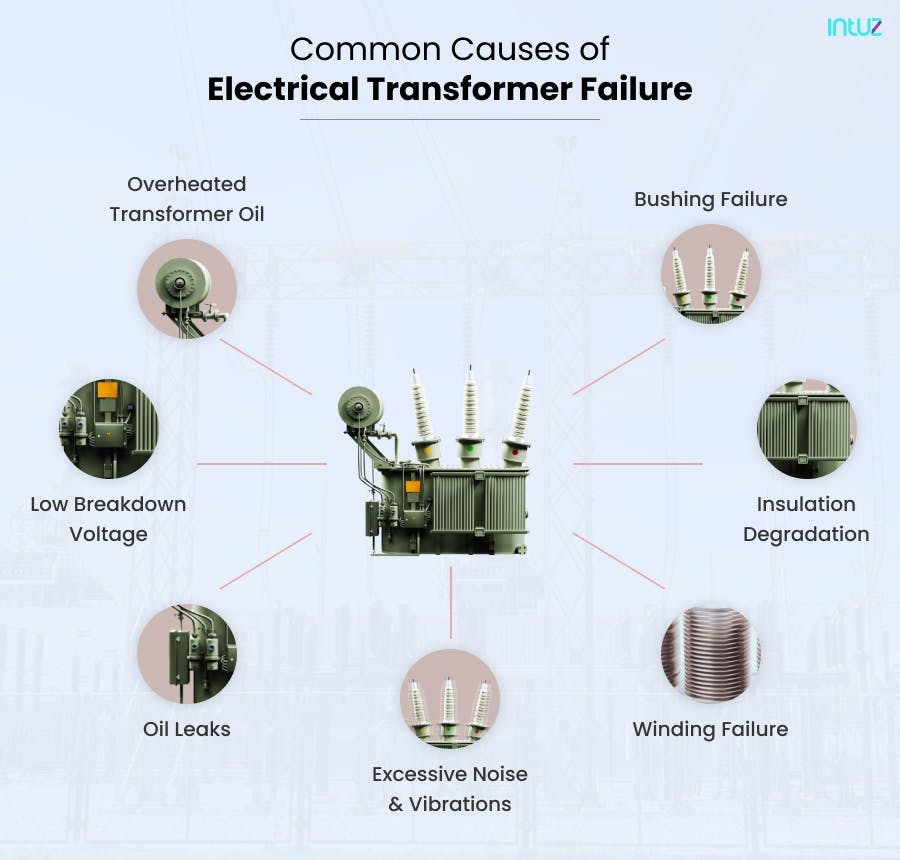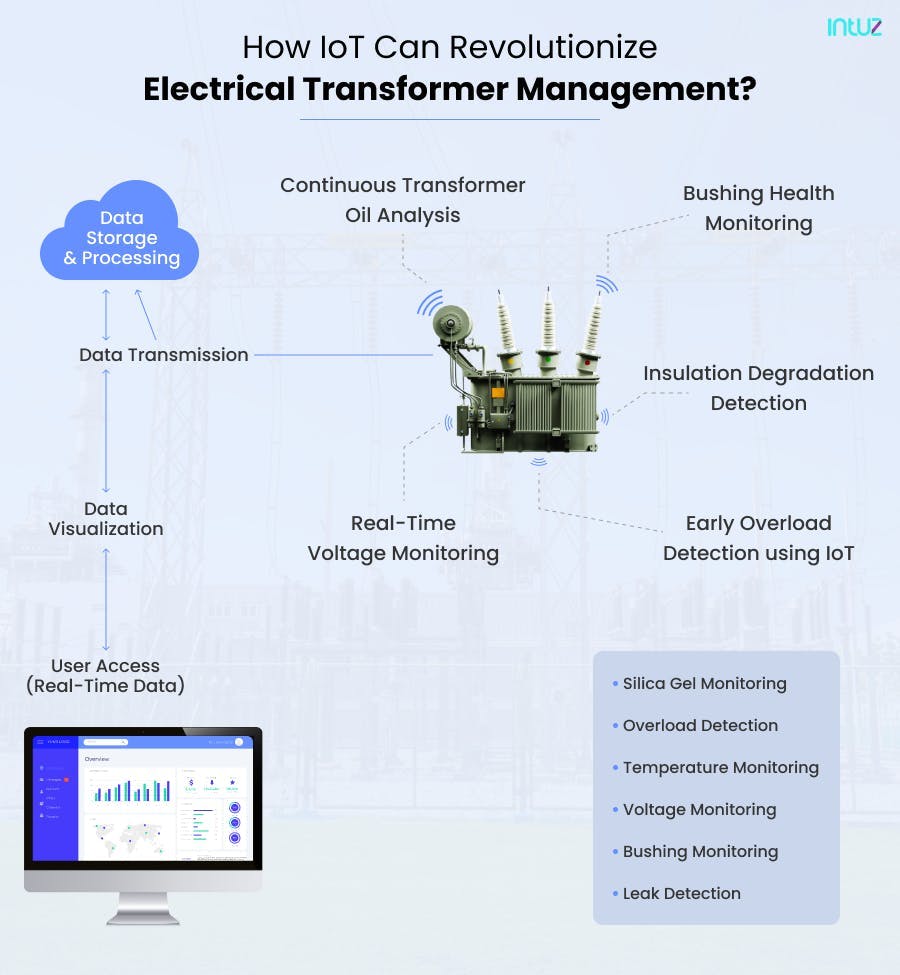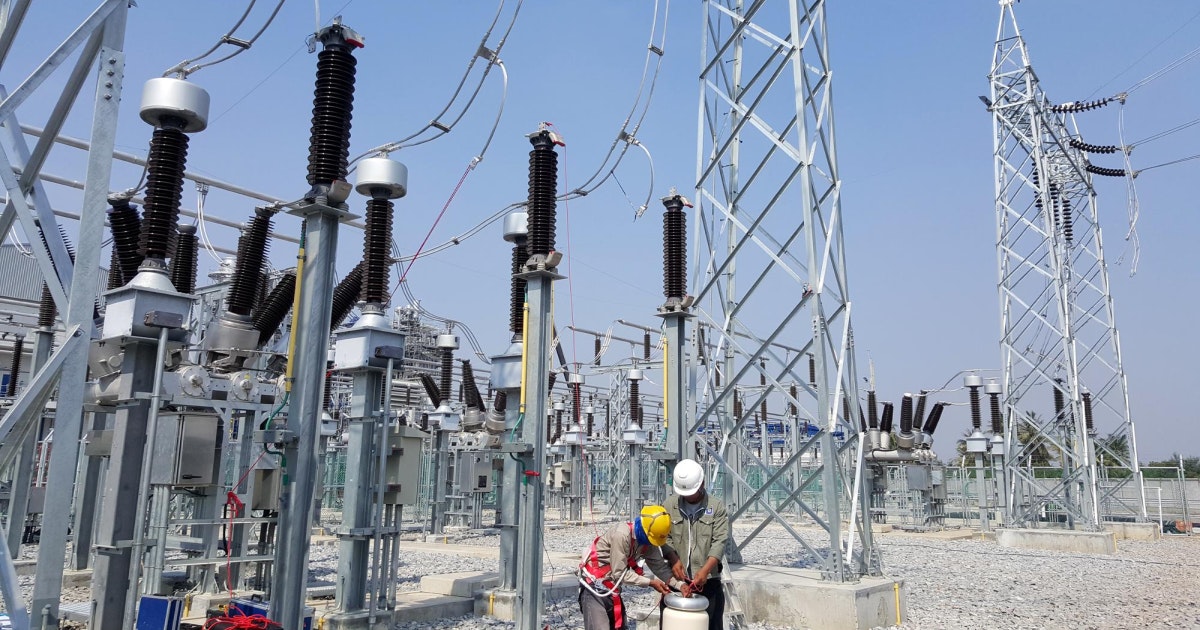Table Of Content
Increasing dependence on transformers also means that failure or even a minor glitch not only causes economic disruption but also poses serious safety concerns.
- A transformer failure in Houston disrupted water supplies and affect over 2.2 million customers for over two days.
- A major power outage in Kansas City in May 2022 affected around 10,000 customers.
A transformer explosion in Bangkok Thailand resulted in two deaths and left several injured.
What are Some of the Common Causes of Electrical Transformer Failure?
Electrical transformers are complex. They require a seamless synergy of multiple systems and regular maintenance to ensure effortless functioning.
However, one question often arises - Why do transformers fail? There are several reasons and determining the weak link in the network is not easy.
From mechanical to electrical faults and human error, there are several causes for electrical transformer failure.

Here are some common electric transformer failures:
1. Insulation Degradation in Transformers
A transformer transfers electrical energy from one voltage to another (lower to higher/higher to lower). During this process, immense heat is generated within the transformers.
An overheated transformer gradually weakens its insulation system. A weakened insulation system causes the transformer to overload, eventually causing a breakdown. Regular inspections and temperature monitoring are critical to ensure transformers work without any issues.
2. Low Breakdown Voltage
Breakdown voltage is one of the most vital parameters for maintaining transformer health. Numerous factors are causing a low breakdown voltage.
Among these factors, high moisture is one of the major reasons for low breakdown voltage. For a breather transformer to work properly, the moisture content must be neither too high nor too low.
High moisture leads to the formation of corrosive gases, damaged insulation, and contaminated transformer oil.
3. Bushing Failure
Bushing failure is one of the major reasons for transformer breakdown, leading to huge economic losses and even fatal casualties. According to an estimate, today up to 20% of major transformer failures can be tracked to the bushing.
A bushing is a hollow insulator that allows safe passage to the electrical current through a conducting barrier such as a transformer. When a bushing stops functioning properly, it causes:
- Interrupted power supply resulting in frequent outages
- Potential fire hazards
- Leading to voltage fluctuations, resulting in damage to other (expensive) electrical components.
4. Winding Failure
Windings are an important component of transformer design. It includes interconnected copper coil bundles that form a winding.
Maintaining the necessary oil level is important to ensure the windings don’t overheat and avoid transformer debacle.
When winding fails, it can result in:
- When winding overheats, it gradually damages the insulating components. This further causes short circuits, crippling the normal functioning of a transformer.
- If a part of the winding breaks or stays open, it reduces voltage output causing the transformer to break down.
Ready to Adopt IoT-Enabled Advanced Transformer Monitoring?
Contact Us5. Overheated Transformer Oil
Transformer oil acts as a cooling agent so it is essential to keep it free of contaminants. Overheated transformer oil gives way to sludge build-up. The contaminated oil becomes less effective and doesn’t provide proper insulation. Moreover, accumulated sludge creates a gap between components resulting in electrical arcing.
6. Oil Leaks
One of the biggest causes of transformer failure is oil leakage. Oil leakage has plagued power companies for a long time as it not only affects the company’s operation but also poses serious safety hazards.
Moreover, massive oil leakages make the transformer go out of work resulting in power outages and environmental threats.
7. Excessive Noise and Vibrations
Transformers produce a certain level of noise and vibration when it’s operational. However, when the transformer starts to generate excessive noise or vibrations, it is a clear sign of an impending problem.
Here are the common causes of transformer noise and vibrations:
- Core and Winding Failure
- Loose Parts
- Damage to insulation components
How IIoT Can Revolutionize Electric Transformer Management?
While transformer failures are quite rare, they can cause immense damage to life and property. It not only results in huge power outages but also can cause casualties to life and property.

Most of these failures can be avoided with proactive maintenance and monitoring. However, manual monitoring is an unfeasible option as it is time-consuming and labor-intensive.
It is here that IoT (Internet of Things) plays a pivotal role in monitoring transformer health and grid management.
IoT is a suite of technologies and business processes that connect different IoT devices on the network. This provides real-time monitoring and analytics of the transformer’s condition.
Monitoring transformers’ performance in real time can help detect early warning signs and prevent potential failures.
Here are some of the IoT solutions to address transformer failure:
1. Find Initial Signs of Insulation Degradation
IoT sensors can help you discover the initial signs of insulation degradation and monitor the transformer’s performance in actual time. Here’s how IoT solutions help:
- Temperature Monitoring - IoT sensors can notice any abnormal variation in the temperature, even if it is minor. This helps the maintenance workers to discover any insulation degradation before the damage goes out of control.
- Overload Detection - Also, integrating IoT technology monitors the electricity flow in the transformer. If it detects any overload, the utility companies can receive alerts giving enough time for the maintenance team to fix the problem.
- Predictive maintenance - The machine learning algorithms within the IoT sensors make it easier to analyze the collected data and even predict when the insulation system is likely to degrade.
2. Record the Voltage Levels in Real-Time
Integrating IoT gives real-time data on any difference in the voltage levels, allowing the maintenance team to identify any possible issues before they escalate.
For an instance, if the voltage level consistently exceeds the given limit, it could indicate a potential malfunction with the transformer. Here’s how IoT addresses low breakdown voltage:
- Moisture Sensors - Moisture sensors installed within the transformer allow the power companies to keep a track of moisture levels in the oil or the presence of corrosive gases.
- Silica Gel Monitoring - IoT sensors can identify any change in the color of the silica gel crystals, enabling utility companies to determine the time for the gel replacement. When the color changes to pink, a notification is sent to the maintenance team to replace the gel.
- Leak Detection - With leak detection sensors, the maintenance staff can get advance notification of any possible leakage. They can fix the seepage before it becomes a huge problem.
3. ML Based Algorithm to Identify Early Indicators of Bushing Failures
IoT sensors in the transformers use machine learning algorithms to identify early indicators of impending issues in the bushing. The algorithm analyzes any discrepancies in data patterns that may indicate the onset of a bushing failure.
- Voltage Monitoring - Voltage monitoring sensors detect any abnormal dissimilarities in the transformer and send a timely notification to maintenance staff.
- Bushing Monitoring - IoT sensors enable utility companies to keep a tab on various parameters such as insulation resistance, dielectric strength, and temperature. Timely detection can ensure a quick fix and prevent any severe consequences.
- Condition-Based Monitoring - IoT sensors collect real-time data to create a baseline of normal operating conditions for the bushing. Any potential deviation means potential failure. IoT sends out a notification to the concerned team to ensure the issue is fixed on time.
4. IoT enables Early Overload Detection
Transformer overloading is one of the key reasons for its failure. IoT sensors make it possible to identify signals of possible overload before the problem goes out of control.
- Winding Monitoring: IoT sensors can easily monitor different parameters, such as temperature, voltage, current, and insulation resistance. Any gaps in their performance can indicate any issues with the winding.
- Moreover, ML algorithms can analyze the data patterns to forecast when the winding is likely to fail.
- Overload detection - IoT sensors are equipped to discover early signs of main winding getting overloaded and trigger an alert to the maintenance team. This enables them to take the necessary steps to prevent failure of the main winding.
5. Real-time Monitoring of Transformer Oil
Transformer oil is a critical component that acts as a coolant and provides insulation to inner components. Monitoring its condition is essential to ensure its safe operation. IoT-enabled sensors allow the maintenance team to track temperature fluctuations. If the temperature exceeds a predetermined limit, a notification is triggered and sent to the respective team.
6. Oil Leakage Detection
Oil leakage in transformers can cause serious safety hazards, and environmental threats, and result in power outages. An effective IoT solution for detecting oil leaks involves the installation of sensors within the transformer, which monitor oil levels and pressure in real time.
The data collected by the sensors is sent to a central monitoring system, which uses machine-learning algorithms to detect any abnormal patterns indicating an oil leak. Maintenance personnel receive immediate alerts, allowing them to address the issue before it becomes a catastrophic failure. By integrating an automated shut-off valve, the system can prevent further oil leakage and minimize environmental damage.
Overall, this IoT solution provides companies with an efficient way to detect and address oil leaks, improving operational efficiency, reducing downtime, and enhancing safety.
Transform Your Power Grid with IoT-Based Transformer Monitoring!
Let's Get StartedOver to you
The IoT-enabled transformer is a vital component of modern-day power infrastructure. From early fault detection to real-time monitoring, IoT solutions play a significant role in making electrical transformers more efficient, reliable, and stable.
Don't wait for a transformer failure to cause disruptions in your energy management system. connect with our IoT experts today and learn how our cutting-edge technology can revolutionize the way you monitor and maintain your transformers.
Our experts will guide you through the process and provide tailored solutions to ensure the seamless functioning of your transformers.
Book a Free 45-minute Consultation with Our IoT Experts Today! Get a customized roadmap and strategies to leverage IoT for smart transformer monitoring.



